Valparaiso was a bit of a mystery. Other than the meagre tidbit that it is a large international sea port, I knew very little about the place, so I had booked us a tour with Patagonia Shorex – which I should probably admit, I booked so long ago, that as I got off the ship this morning, I had no recollection whatsoever as to where the tour was taking us. So yeah, today, as a travel agent I’d probably make a good brick layer.
We were met by our lovely guide, Dixianna (Dixie for short), who was going to be showing us around. Dixie turned out to be full of interesting information, which of course is a very desirable trait in a tour guide! Valparaiso has been an important Chilean city throughout modern history, as it served as a major stopover point for ships traveling between the Atlantic and Pacific Oceans, as they passed through the Straits of Magellan and around the Cape. The city’s ‘golden age’ saw the area grow enormously as it attracted many European immigrants, from Britain, France, Italy, Germany, and Switzerland – all of these European influences are evidence in the architecture throughout the city.
We first went north towards a township that is adjacent to Valparaiso (the city limit/s apparently run straight through the middle of a public school!), called Vina del Mar – a place where once vineyards were common, but now is a city best known as a major tourist attraction, and the town sees travellers all year round. Dixie informed us that the area was originally populated by the Chango people, who were nomadic and primarily lived on fishing endeavours. The first Spanish explorers (I didn’t catch the names – Amergo? Amagero? Not sure and can’t google it just now) arrived in 1536. The Chango people originally called the Vina del Mar area, the ‘Burned Land’ which referenced the frequent bush fires that still plague the region. Thankfully, nothing looked even remotely of recent bush fire activity, and instead we went to visit what we were told is South America’s first ‘flower clock’. It is currently planted with red and pink flowery things (big gardener type, me). The flowers are changed every three months apparently, and there is a tunnel beneath it for maintenance. Personally, I don’t see the significance of such things, but I’ve stopped and taken photos of many a weirder town monument, so there it is.

As mentioned earlier, Vina del Mar is a huge tourist town, and it’s wide esplanade is usually bustling with tourists enjoying the seaside restaurants and shops. However, this week, the ocean has been particularly rough, and the waterfront area was completely closed to pedestrian traffic. No storms or anything, just really huge waves rolling right up to the town’s edge. In recent years Vina del Mar has frequently had to close the waterfront area due to the rough ocean weather crashing onto the breakfront… This is largely due to climate change – historically this sort of weather was very rarely experienced, but it is becoming increasingly common and is causing severe erosion. The town is constantly taking measures to repair buildings and walkways that were getting damaged by these crazy high tides and the brutal onslaught of the constantly crashing waves. Houses and buildings in lower income areas that are affected by the rough seas are generally either left derelict or repaired slowly over time, but the fancy art deco casino and the lucrative public boardwalk shopping and restaurant areas are always repaired very quickly. It is becoming a very significant concern for local authorities, and the local constabulary will fine people that go past the barriers that are put in place for people’s safety.





Next we went to see a genuine ‘moai monument from the Easter Island that was relocated to Vina del Mar at great expense, and after much negotiating with the Chilean government and the local tribal councils on Easter Island’. I guess Dixie wasn’t to know that we have all recently just visited the island and seen hundreds of the enormous and impressive monuments in situ a few days before; she was genuinely puzzled that no one seemed particularly interested in the lonely monument that to us seemed sadly out of context, set as it is, outside the Fonck Museum. Instead, we spied the spire of a nearby church and all wandered around the corner to see what it looked like. The church was beautiful, with it’s gothic style architecture, select stained glass windows, mosaic tile floor and beautiful timber and gold nave, and quaint confessionals. Again, our poor guide was puzzled at our interest in the church, and I found myself explaining that in Australia, many churches are unfortunately designed in the same style as a 1960s brick toilet block, so sandstone churches such as these are quite rare for us, whereas Dixie shrugged and said many churches in Valparaiso look similar to this one.







After the church we made a quick stop at a botanical garden that leads to a huge modern amphitheatre that was preparing for the music festival that was starting soon, and then we hit the road back to Valparaiso proper. Along the way, I caught glimpses of some of the city’s famous street art.
As we drove along the highway that connects Valparaiso and Vina del Mar, we were informed that the port continued to be a significant centre for resupplying and supporting ships during the Californian Gold rush of the late 19thC, as well as being a huge export centre for copper and various produce. Unfortunately for Valparaiso however, from the 1950s onwards, there was a fairly significant socio-economic decline after the opening of the Panama Canal, which caused a serious decrease in ship traffic. Many eminent families moved to Santiago, and the port-based economy suffered for quite a long time. In more recent years, Valparaiso has started to stage a recovery by becoming the ‘Cultural Capital of Chile’, attracting artists, musicians, chefs, writers and culture vultures, who have reinvigorated the city’s historic districts. The city also has four major universities to attract international attention, and is constantly hosting music festivals and community street art projects.






Our first stop on our return to Valparaiso, was to Neruda House, also known as La Sebastiana. Located high in the hills of Valparaiso, the house once belonged to Pablo Neruda, the famous poet who had taken over the unfinished house started by architect, Sebastian Collado who had died before finishing the home. It is now a museum dedicated to the poet, and is full of Neruda’s eclectic things from the mid-20thC. Neruda obviously had a striking sense of interior design, and the house is full of many original pieces of furniture, pictures and objects, but nothing in the house is quite so impressive as the views, visible from every window, over Valparaiso Harbour. The house was designed to make best advantage of the sweeping panorama below and it is absolutely beautiful. It was a twisting windy little narrow house built over five floors, and I can’t imagine living there with all those stairs, but the views would make it worth it!





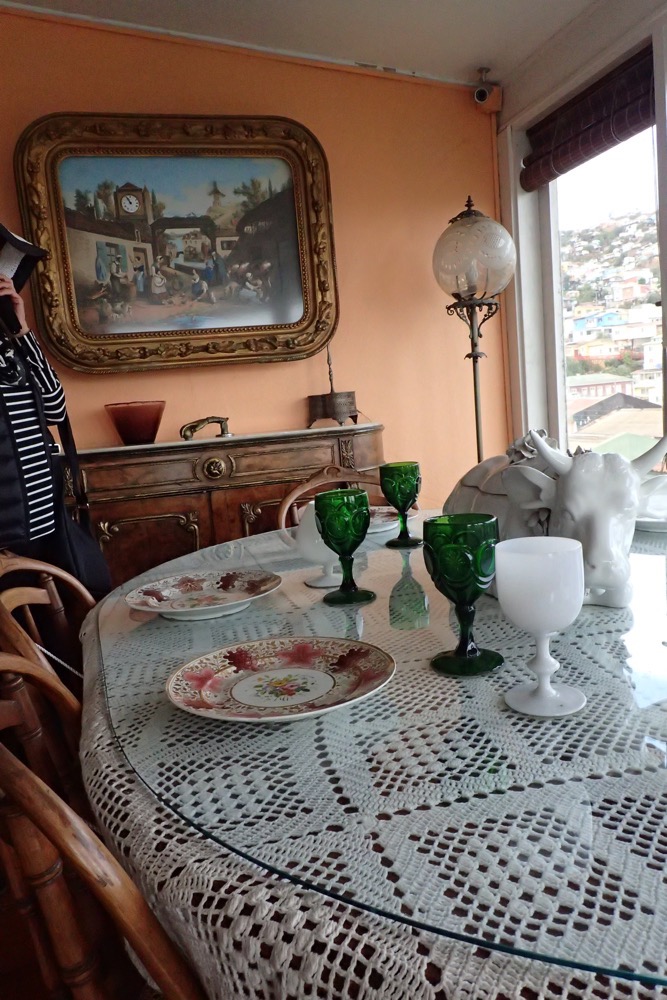




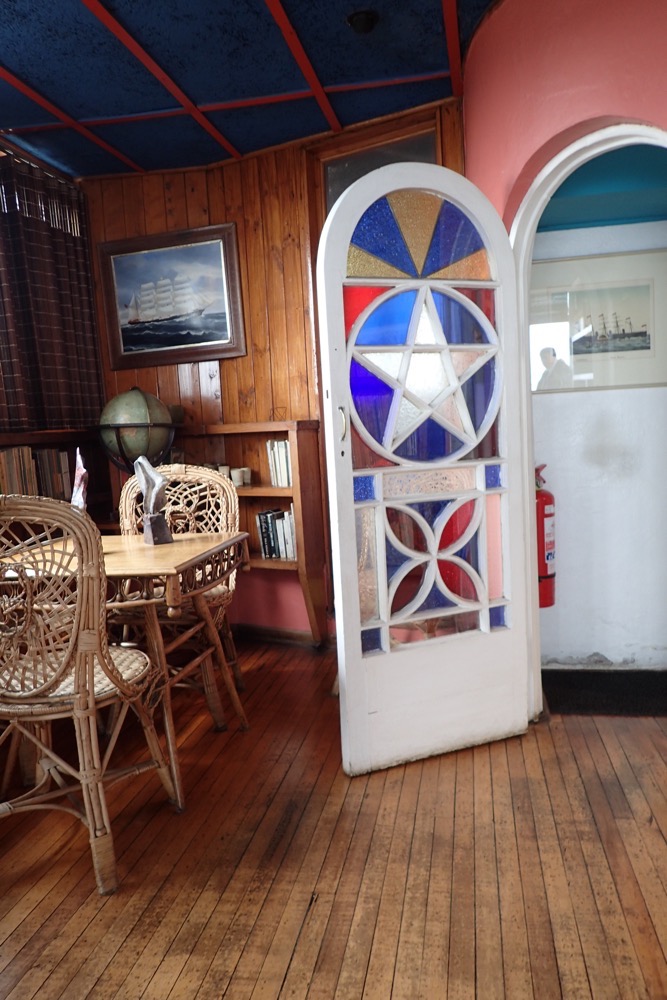
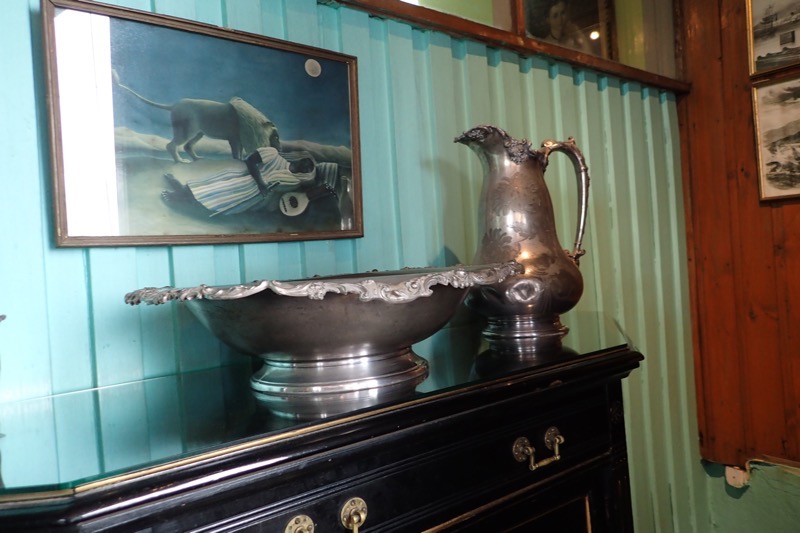


After this we drove further into the historic older district of Valparaiso, with more fabulous street art and more fabulous views of the city. Tourism now makes up a good portion of Valparaiso’s economy as people come to enjoy the cobbled alleys and maze-like streets, the colourful buildings and the creative murals and almost overwhelming amount of street art.

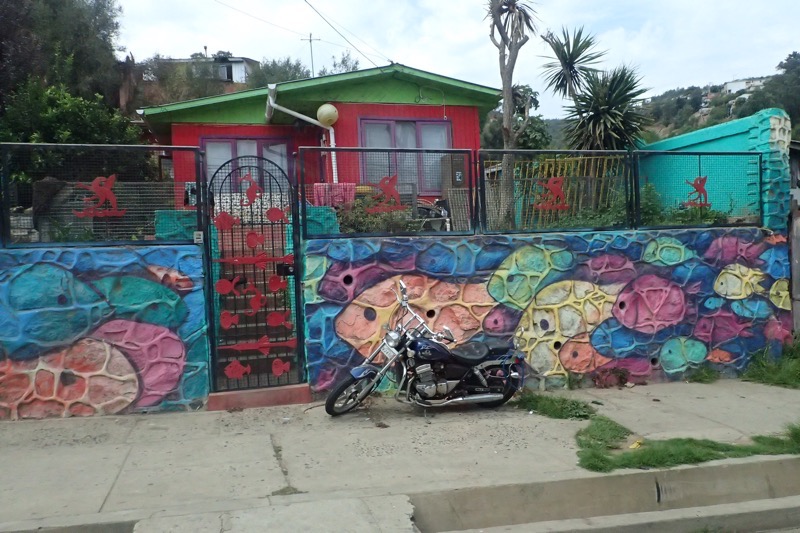




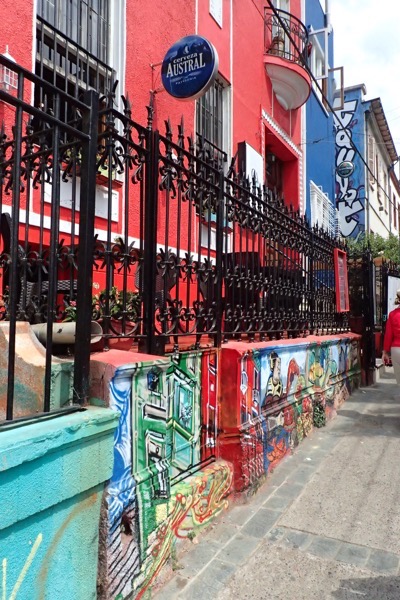



The city is nicknamed ‘The Jewel of the Pacific’ and its historic district was named a UNESCO World Heritage site, in particular its unusual funicular lifts. Built onto the steep hillsides that overlook the bay, Valparaiso is a winding labyrinth of narrow streets and cobblestone alleyways, between crazy diverse architectural and cultural centres, there is system of ascensore (funicular) lifts that help the locals get around. For 100 CHL (Chilean pesos), you can take one of these funiculars up a hillside and cut large sections off your steep uphill walks. This beautifully kept bright yellow house (above) is at the top of one of the ascensores that take people into the historical district. There are 15 of these rickety old ascensores, that are located in different parts of the city. Dixie also mentioned there was one other that was not for public use, but belongs to a local hospital. These funiculars are also protected by world heritage status and therefore all kept in (at least, barely) working order. The most popular spot for tourist is to ascent to the Conecpcion and Alegre historical district, or Bellavista hill which is known as an ‘open air museum’ as it contains so much street art.
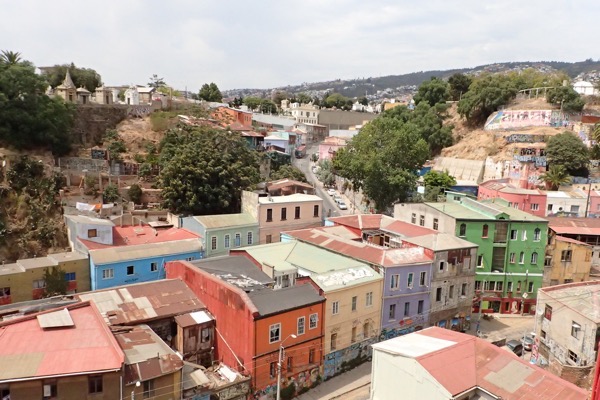
 Next stop was this crazy street corner covered with its bright red paint and ceramic tile mosaics, called the Resting Corner or Resting Place, (which is a bit grave, and way less than cheerful in English!). The Resting Place was a community street project where artists and members of the local community who are interested come together to create a space. All of the art works are very much encouraged by the city authorities, and Dixie was saying that if you wanted to paint your house a bright colour, all you had to do was tell the council and they would provide the paint and the workers. If you wanted a mural on your house, you had to apply to do one (presumably for design approval) and they would come paint a mural on your house, but you would be charged a little extra for mural painting. No wonder the city is so colourful and covered in art work – it is all subsidised by the city.
Next stop was this crazy street corner covered with its bright red paint and ceramic tile mosaics, called the Resting Corner or Resting Place, (which is a bit grave, and way less than cheerful in English!). The Resting Place was a community street project where artists and members of the local community who are interested come together to create a space. All of the art works are very much encouraged by the city authorities, and Dixie was saying that if you wanted to paint your house a bright colour, all you had to do was tell the council and they would provide the paint and the workers. If you wanted a mural on your house, you had to apply to do one (presumably for design approval) and they would come paint a mural on your house, but you would be charged a little extra for mural painting. No wonder the city is so colourful and covered in art work – it is all subsidised by the city.

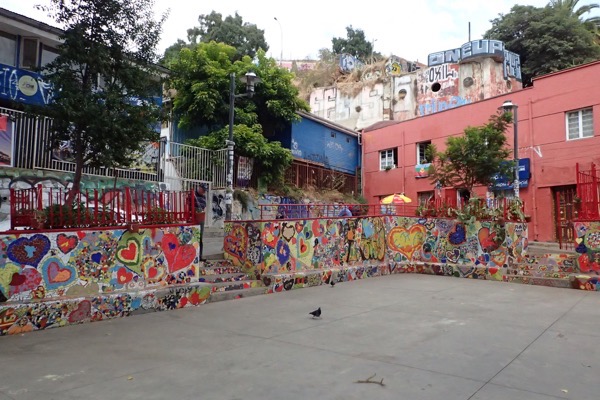


The rest of our afternoon was spent walking back down the hillside, winding through the historic district and marvelling at the brightly painted buildings. There were painted tributes to Easter Island, to penguins, elements of Chilean culture, backpacker hostels painted with bright red double decker buses, a Van Gogh tribute, stairways painted like piano keys, a rock sculpture wall, and all mixed in with beautiful views down over the city. This liberal attitude towards painting the town is evident everywhere and while there is a LOT of graffiti covering the town, none of it is over the top of the beautiful murals.
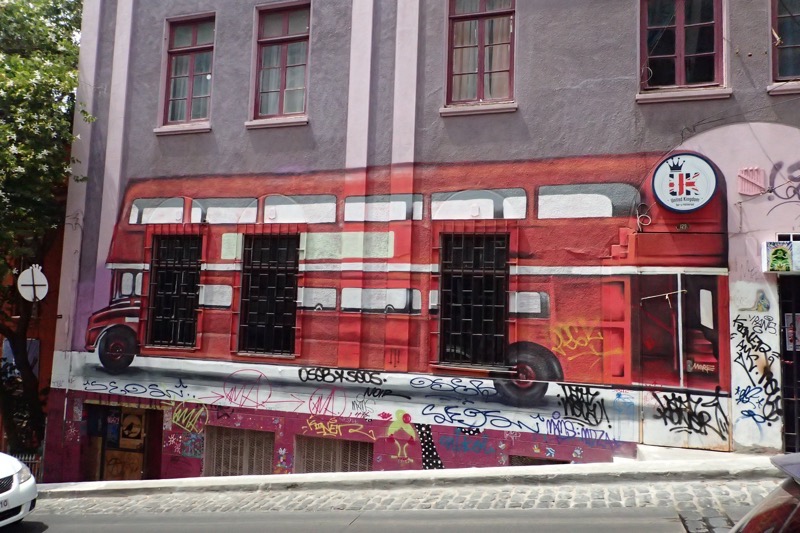







Valparaiso is certainly a beautiful and interesting city with so many interesting pieces of street art, that I have gone totally overboard with images in this post… and these aren’t half of the pics I took!








After this, it was time to head back to the ship – but not before ferreting out a fabric store to try and find some fabric for Aunty Mary’s hand sewn quilt that she has been working on. We found two fabric stores, but weirdly could not find any material that was 100% cotton in either?! In the end, we gave up and head for a local department store, where we found, in the men’s department, a 100% cotton shirt with a print that will do quite nicely, so we bought it to take back to the ship to cut up into little hexagons to be added to her quilt. Everyone needs a decent project for these long sea days, there’s only so much bingo and trivia you can handle! 🙂

 A queue that stretched for about 250m BEFORE it got to the Disney-esque rope lines that were organising visitors into an orderly squish while they waited to line up and buy tickets. Well, as much as I love the fishes (probably most of which are pilfered from the Great Barrier Reef anyway) and of course the otters, there was no way I was standing in line for several hours to enter into exhibition halls full of overexcited children and semi-distraught, but amused, parents. So we did an about-face and decided to head to an art museum instead. So many little takoyaki stalls in/around the aquarium… come see the squids and jellyfishes, don’t forget to eat some before you leave?!
A queue that stretched for about 250m BEFORE it got to the Disney-esque rope lines that were organising visitors into an orderly squish while they waited to line up and buy tickets. Well, as much as I love the fishes (probably most of which are pilfered from the Great Barrier Reef anyway) and of course the otters, there was no way I was standing in line for several hours to enter into exhibition halls full of overexcited children and semi-distraught, but amused, parents. So we did an about-face and decided to head to an art museum instead. So many little takoyaki stalls in/around the aquarium… come see the squids and jellyfishes, don’t forget to eat some before you leave?! Given our late start to the day, we thought we would pop in for some lunch at a cute little curry place. I love how you order a small curry and you end up with a pile of stuff to try, some of it recognisable, some of it not so much!
Given our late start to the day, we thought we would pop in for some lunch at a cute little curry place. I love how you order a small curry and you end up with a pile of stuff to try, some of it recognisable, some of it not so much! The Yuki Art Museum is a small gallery dedicated to the objects used in traditional Japanese tea ceremonies. The Japanese tea ceremony, or the Way of Tea, is a cultural activity that involves a ritualized ceremonial preparation of matcha, a powdered green tea. This museum house many important Japanese cultural objects, predominantly from the Edo period (approximately 1600-1870), relating to the tea ceremonies (And yes! it was much quieter and more pleasant here than at the aquarium!)
The Yuki Art Museum is a small gallery dedicated to the objects used in traditional Japanese tea ceremonies. The Japanese tea ceremony, or the Way of Tea, is a cultural activity that involves a ritualized ceremonial preparation of matcha, a powdered green tea. This museum house many important Japanese cultural objects, predominantly from the Edo period (approximately 1600-1870), relating to the tea ceremonies (And yes! it was much quieter and more pleasant here than at the aquarium!)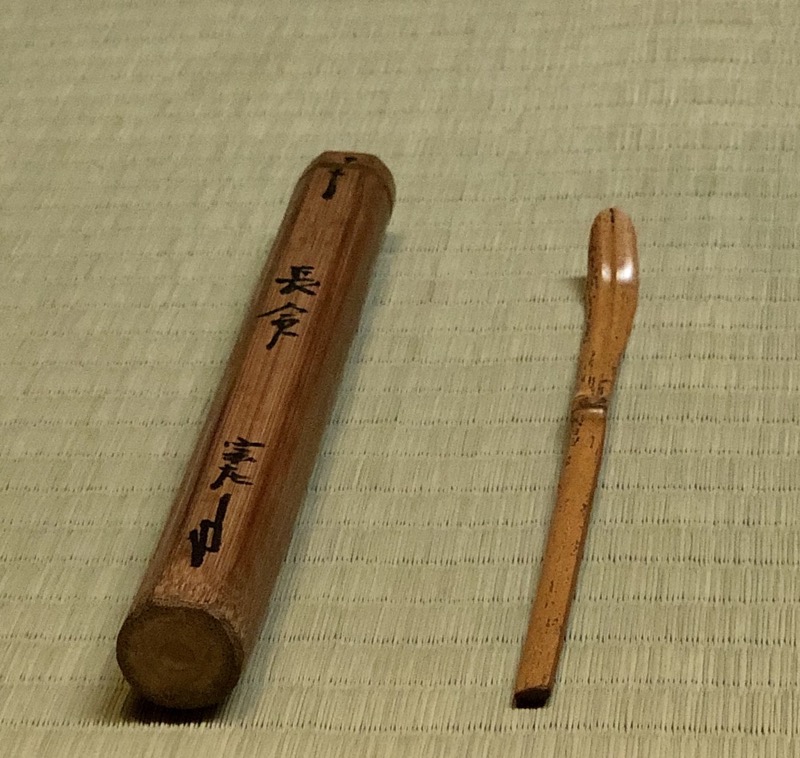 Gour used to bear hot water, late 1800s.
Gour used to bear hot water, late 1800s. Water jar, Ryukyo-Suisya (Willow bridge and water wheel folding screens design) Ninsei studio, also Edo period, 17thC.
Water jar, Ryukyo-Suisya (Willow bridge and water wheel folding screens design) Ninsei studio, also Edo period, 17thC.  Water kettle – Yoho (square) type, by Yojiro. Muromachi period, 16th C.
Water kettle – Yoho (square) type, by Yojiro. Muromachi period, 16th C. Tea bowl and dishes used in Japanese tea ceremony.
Tea bowl and dishes used in Japanese tea ceremony.
 Tea bowl, mountain and river design, late Edo period, studio of Kenzan, c.1860s.
Tea bowl, mountain and river design, late Edo period, studio of Kenzan, c.1860s.

 Intricately pierced lacquerware trays, late Edo period 19thC.
Intricately pierced lacquerware trays, late Edo period 19thC. Tea caddies, Katatsuki (square shouldered type), Seto ware known as Shunzan-Asei, Edo period 17th C.
Tea caddies, Katatsuki (square shouldered type), Seto ware known as Shunzan-Asei, Edo period 17th C.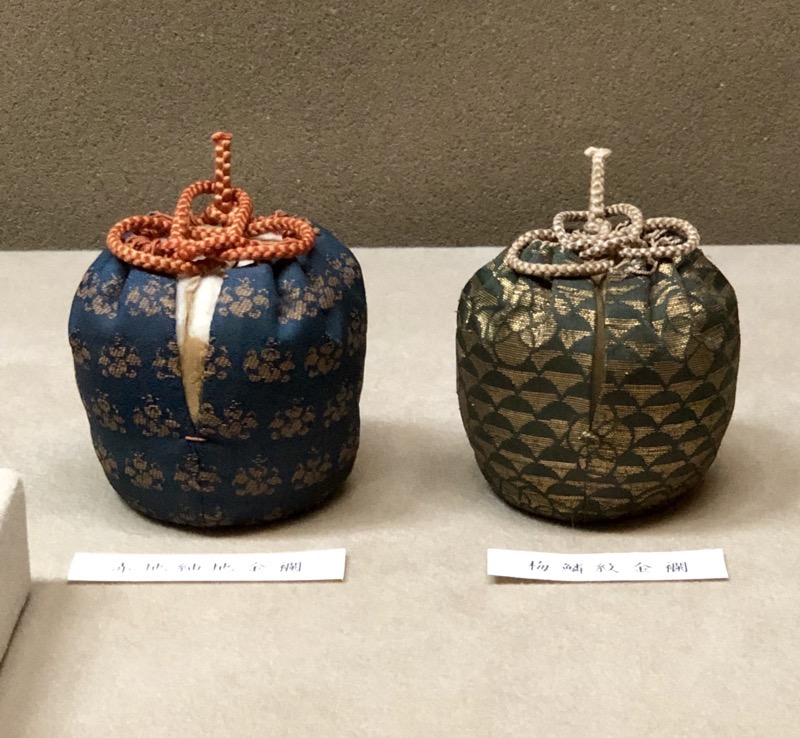

 So much plush – must resist the urge to tidy it!
So much plush – must resist the urge to tidy it!
 This Pokemon Centre appears to be the same as the Tokyo one, though slightly more toys and stuff crammed into slightly less space. I feel like Nintendo are really missing opportunities to properly merchandise their crap though. Most of their stuff is aimed at small kids, yet it’s overpriced and usually quite poor quality. The whole thing feels a bit weird, especially given the global popularity of Pokemon Go. Most small kids lost interest in Pokemon Go fairly quickly – you need to be mobile and have lots of time out of the house to be effective to play it… many kids relying on parents to ferry them to battles and events eventually gave up. The result of which is that the average Pokemon player seems to be in the 20s-40s and they effectively walking wallets… but come in here, and there is very limited merchandise aimed at this audience. I’m quite surprised at this oversight, as Nintendo already have the perfect model in Disney to make sure they are covering all their bases and maximising their exposure and profits. It feels like they just don’t known or care to cater to their older customers.*shrug*
This Pokemon Centre appears to be the same as the Tokyo one, though slightly more toys and stuff crammed into slightly less space. I feel like Nintendo are really missing opportunities to properly merchandise their crap though. Most of their stuff is aimed at small kids, yet it’s overpriced and usually quite poor quality. The whole thing feels a bit weird, especially given the global popularity of Pokemon Go. Most small kids lost interest in Pokemon Go fairly quickly – you need to be mobile and have lots of time out of the house to be effective to play it… many kids relying on parents to ferry them to battles and events eventually gave up. The result of which is that the average Pokemon player seems to be in the 20s-40s and they effectively walking wallets… but come in here, and there is very limited merchandise aimed at this audience. I’m quite surprised at this oversight, as Nintendo already have the perfect model in Disney to make sure they are covering all their bases and maximising their exposure and profits. It feels like they just don’t known or care to cater to their older customers.*shrug*  While we were at the Pokemon Centre, there was a Pokemon Trading Card game tournaments happening – there must have been 150 kids and adults all playing the trading card games. Some having a lot of fun and smiling and not taking it too seriously, and some looking very studious. Having never been to a game tournament like this, I thought it was very interesting.
While we were at the Pokemon Centre, there was a Pokemon Trading Card game tournaments happening – there must have been 150 kids and adults all playing the trading card games. Some having a lot of fun and smiling and not taking it too seriously, and some looking very studious. Having never been to a game tournament like this, I thought it was very interesting. I have no idea how the game is played or what’s involved, but I couldn’t help but wonder if this little kid was kicking arse! 😉
I have no idea how the game is played or what’s involved, but I couldn’t help but wonder if this little kid was kicking arse! 😉  After this stop, we did some general shopping and ended up calling it a day. Navigating Osaka in the crowds is somewhat harrowing at the best of times, navigating the trains during Golden Week is crazy – mind you, even though everywhere seems to be packed full of domestic tourists at the moment, everything feels orderly, friendly and super polite. I can’t imagine this many people being this well behaved anywhere else in the world. ‘take
After this stop, we did some general shopping and ended up calling it a day. Navigating Osaka in the crowds is somewhat harrowing at the best of times, navigating the trains during Golden Week is crazy – mind you, even though everywhere seems to be packed full of domestic tourists at the moment, everything feels orderly, friendly and super polite. I can’t imagine this many people being this well behaved anywhere else in the world. ‘take
 Now, everyone, knows transit days suck balls… big hairy sweaty ones on occasion, and this is why the No 1 Golden Rule of Travel is: Never plan to go sightseeing on transit days! So what did these very well travelled individuals plan for today? Well, we broke the stupid rule and planned to disembark the ship in Yokohama, take a train to Kyoto, put our luggage in storage, and go to the famous Minamiza Theatre in Gion to see the Mikayo Odori Spring Dances. It’s barely a 20 minute trip on the Shinkansen from Osaka to Kyoto, and ideally, we would have come back at some point over the next week to see this uniquely Japanese cultural experience – but the season quite literally ends today, and we were able to buy tickets for the second last performance for 2019. So here we were, breaking the Travel Rules.
Now, everyone, knows transit days suck balls… big hairy sweaty ones on occasion, and this is why the No 1 Golden Rule of Travel is: Never plan to go sightseeing on transit days! So what did these very well travelled individuals plan for today? Well, we broke the stupid rule and planned to disembark the ship in Yokohama, take a train to Kyoto, put our luggage in storage, and go to the famous Minamiza Theatre in Gion to see the Mikayo Odori Spring Dances. It’s barely a 20 minute trip on the Shinkansen from Osaka to Kyoto, and ideally, we would have come back at some point over the next week to see this uniquely Japanese cultural experience – but the season quite literally ends today, and we were able to buy tickets for the second last performance for 2019. So here we were, breaking the Travel Rules.

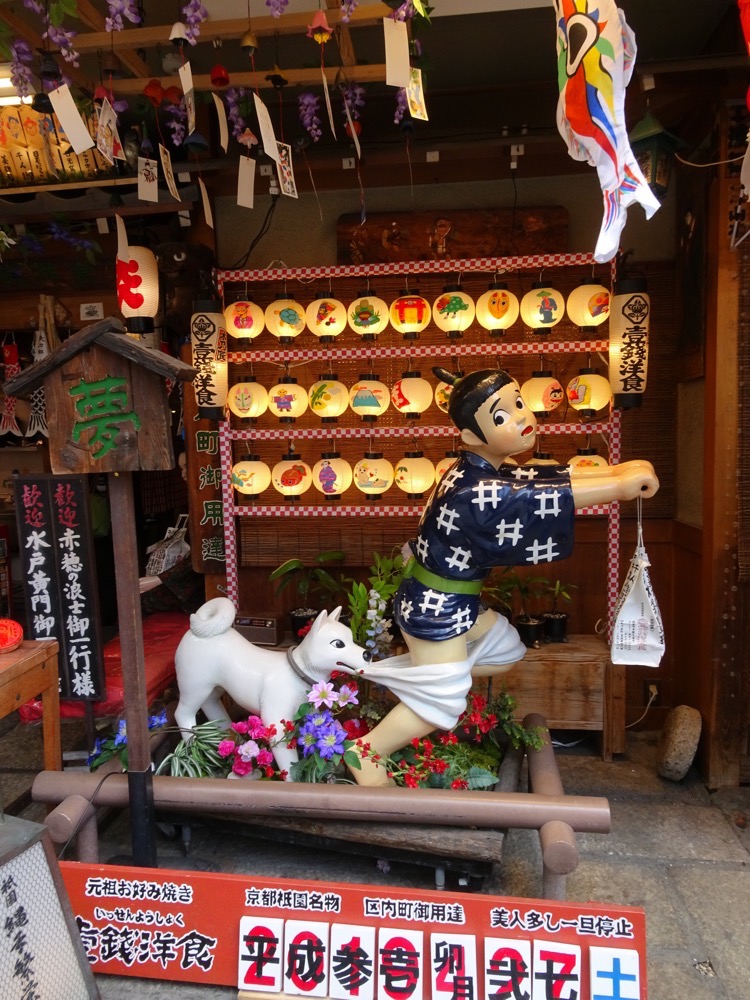
 The Miyako Odori spring dances have been held at the Minimaza theatre (which was built in the 1600s) since the late 1800s. The place has quite a history and each year the dances are designed to celebrate the spring/cherry blossom season and to show off the talent of the maiko – the apprentice geisha who grace the Hanamachi, (the ‘Flower Town’ pleasure district) of Gion that is full of historic ochaya (teahouses) and okiya (geisha houses).
The Miyako Odori spring dances have been held at the Minimaza theatre (which was built in the 1600s) since the late 1800s. The place has quite a history and each year the dances are designed to celebrate the spring/cherry blossom season and to show off the talent of the maiko – the apprentice geisha who grace the Hanamachi, (the ‘Flower Town’ pleasure district) of Gion that is full of historic ochaya (teahouses) and okiya (geisha houses).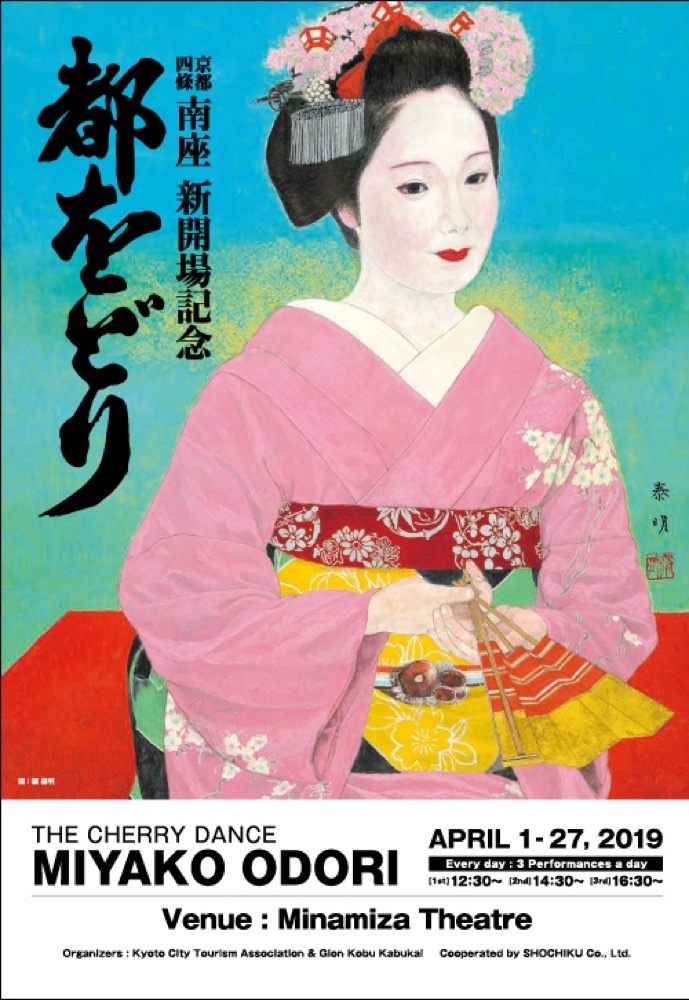

 I remember these kimono from when we were last in Kyoto in 2015 – we visited an exhibition called ‘The Maiko Story’ that highlighted the history and traditions of the lives of the maiko and geiko that grace Gion. Today we would get to see the maiko dancing in them.
I remember these kimono from when we were last in Kyoto in 2015 – we visited an exhibition called ‘The Maiko Story’ that highlighted the history and traditions of the lives of the maiko and geiko that grace Gion. Today we would get to see the maiko dancing in them. 
 There is no photography allowed in the theatre during performances, so I have ‘borrowed’ some images from official promotional material and ever helpful Wikipedia. The costumes were lovely, the dancing was precise, graceful and exactly what I expected to see from these highly trained artisans. The music, however, was at various points during the performance ear piercingly painful! The flutes, they’re so high! Ouch. The singing too, while not as bad as the caterwauling we experienced at various cultural performances in China, was likewise not always ‘pleasant’. Still, it was quite the visual spectacle and it was wonderful to add this quintessentially Japanese experience to our ‘When in Rome’ List.
There is no photography allowed in the theatre during performances, so I have ‘borrowed’ some images from official promotional material and ever helpful Wikipedia. The costumes were lovely, the dancing was precise, graceful and exactly what I expected to see from these highly trained artisans. The music, however, was at various points during the performance ear piercingly painful! The flutes, they’re so high! Ouch. The singing too, while not as bad as the caterwauling we experienced at various cultural performances in China, was likewise not always ‘pleasant’. Still, it was quite the visual spectacle and it was wonderful to add this quintessentially Japanese experience to our ‘When in Rome’ List.
 The final scene was quite the spectacle with all the performers returning to the stage and dancing in unison – except for two obviously very senior geiko who seemed to be marching to their own tune.
The final scene was quite the spectacle with all the performers returning to the stage and dancing in unison – except for two obviously very senior geiko who seemed to be marching to their own tune.
1_fvde-2f.jpg) After the performance was over we hopped another cab back to the Post Office to collect the luggage and made our way back to the Shinkansen to catch a train to Osaka. Thankfully, we didn’t have much trouble finding seats – it is the Tokyo to Kyoto segment that seems to be super popular at the moment and we were not surprised given it is Golden Week.
After the performance was over we hopped another cab back to the Post Office to collect the luggage and made our way back to the Shinkansen to catch a train to Osaka. Thankfully, we didn’t have much trouble finding seats – it is the Tokyo to Kyoto segment that seems to be super popular at the moment and we were not surprised given it is Golden Week. After we got settled, we were a bit shattered to be honest (that is what you get for breaking the Travel Rules), so Keith popped out for some milk to make tea and some sake for well,…for obvious reasons really! Eventually, we opted to go out for a late dinner and we ended up at a restaurant called
After we got settled, we were a bit shattered to be honest (that is what you get for breaking the Travel Rules), so Keith popped out for some milk to make tea and some sake for well,…for obvious reasons really! Eventually, we opted to go out for a late dinner and we ended up at a restaurant called  Dinner was a delicious boat of fresh sashimi, some takoyaki and yakitori and of course sake! (If it looks like I am using alcohol to help me sleep in the absence of some of my medications and my own bed – that is probably because I am!)
Dinner was a delicious boat of fresh sashimi, some takoyaki and yakitori and of course sake! (If it looks like I am using alcohol to help me sleep in the absence of some of my medications and my own bed – that is probably because I am!) The place has a lively atmosphere, a lot of laughter from the rabbit warren of individual little dining rooms, and the free-flowing liquor. If it weren’t for the Japanese propensity to let people still smoke cigarettes in these types of restaurants, I’d say it was a perfect fun spot with great food and we’ll be back – but, there are too many other places to try and if we can find great food sans smoking, we’d much prefer it.
The place has a lively atmosphere, a lot of laughter from the rabbit warren of individual little dining rooms, and the free-flowing liquor. If it weren’t for the Japanese propensity to let people still smoke cigarettes in these types of restaurants, I’d say it was a perfect fun spot with great food and we’ll be back – but, there are too many other places to try and if we can find great food sans smoking, we’d much prefer it. 
 Then, it was time to head back to the hotel, write all this guff up before we have new adventures tomorrow and I forget all about the details of today.
Then, it was time to head back to the hotel, write all this guff up before we have new adventures tomorrow and I forget all about the details of today.

 Most of the leaves have dropped from the trees, but some in happy warm spots are still in lovely fall colours. The fortifications of the old palace are seriously impressive – that large block in the bottom left is taller than I am.
Most of the leaves have dropped from the trees, but some in happy warm spots are still in lovely fall colours. The fortifications of the old palace are seriously impressive – that large block in the bottom left is taller than I am.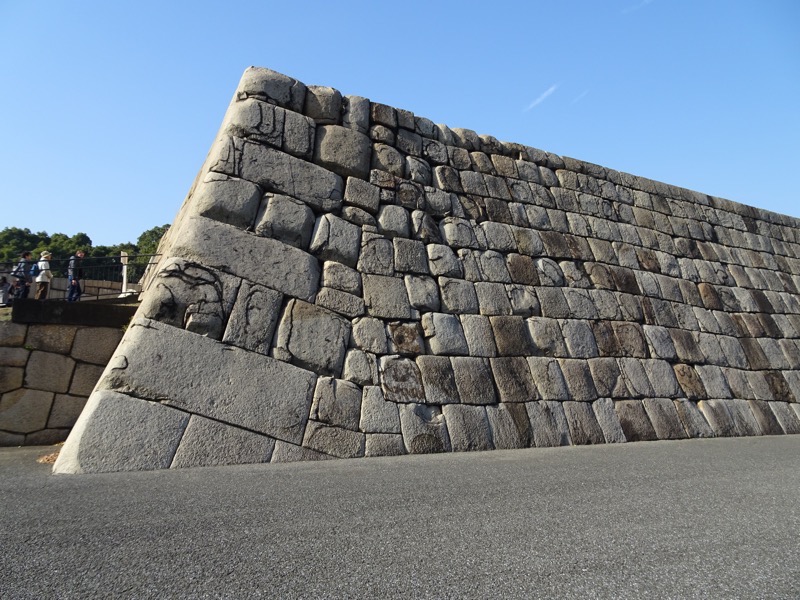 After a wander around the palace grounds (the palace itself is not open to the public as the current Imperial family still reside there) we took a train to Asakusa to see the markets and visit the Senso-ji temple. The Asakusa temple is Tokyo’s oldest temple and considered one of its most significant. It is dedicated to Guanyin, the Buddhist Goddess of Mercy
After a wander around the palace grounds (the palace itself is not open to the public as the current Imperial family still reside there) we took a train to Asakusa to see the markets and visit the Senso-ji temple. The Asakusa temple is Tokyo’s oldest temple and considered one of its most significant. It is dedicated to Guanyin, the Buddhist Goddess of Mercy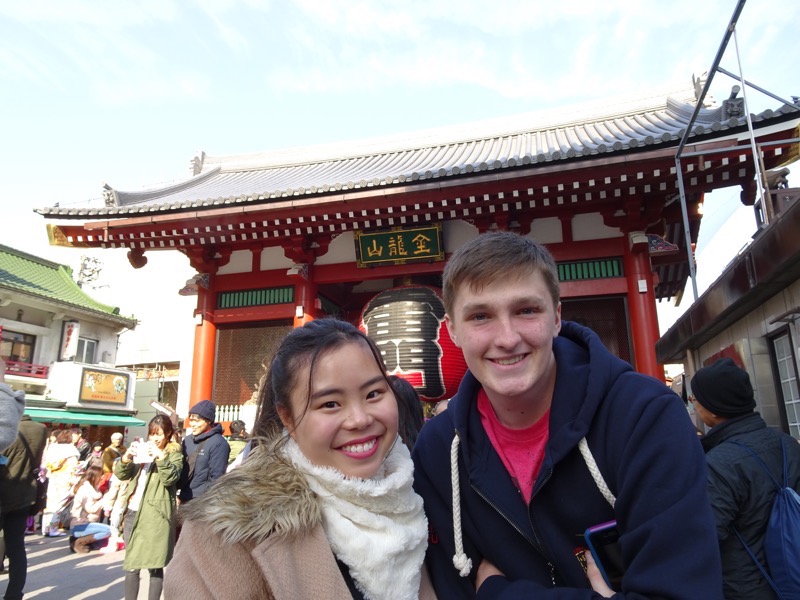 The markets leading up to the temple are full of fun touristy stuff and yummy street food.
The markets leading up to the temple are full of fun touristy stuff and yummy street food.

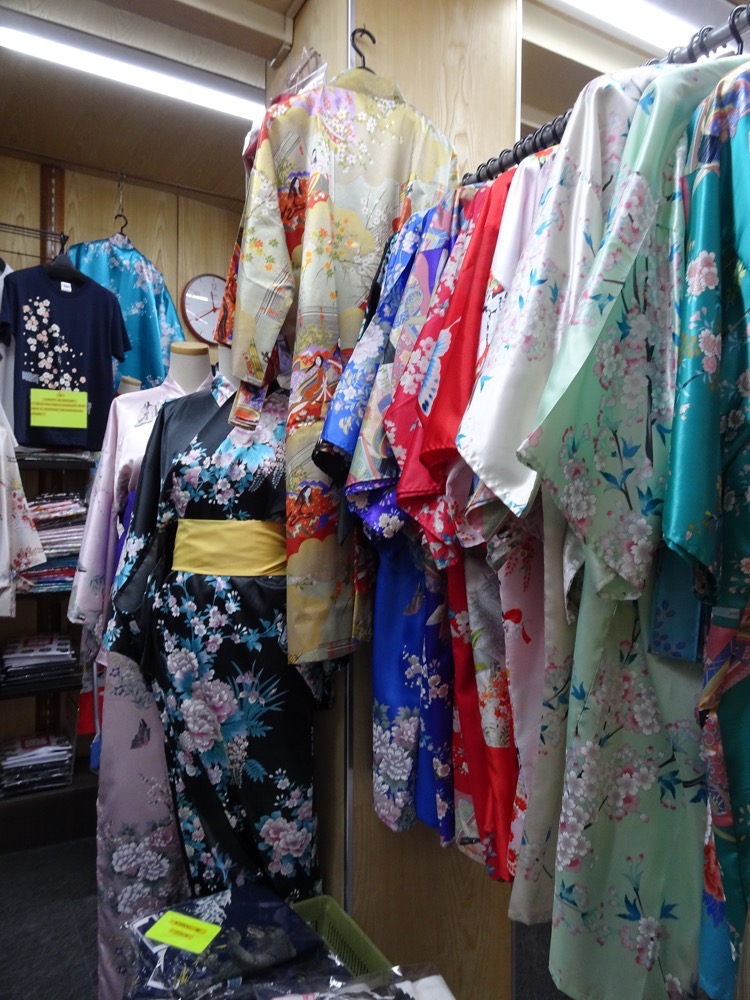 Hozomon gate.
Hozomon gate.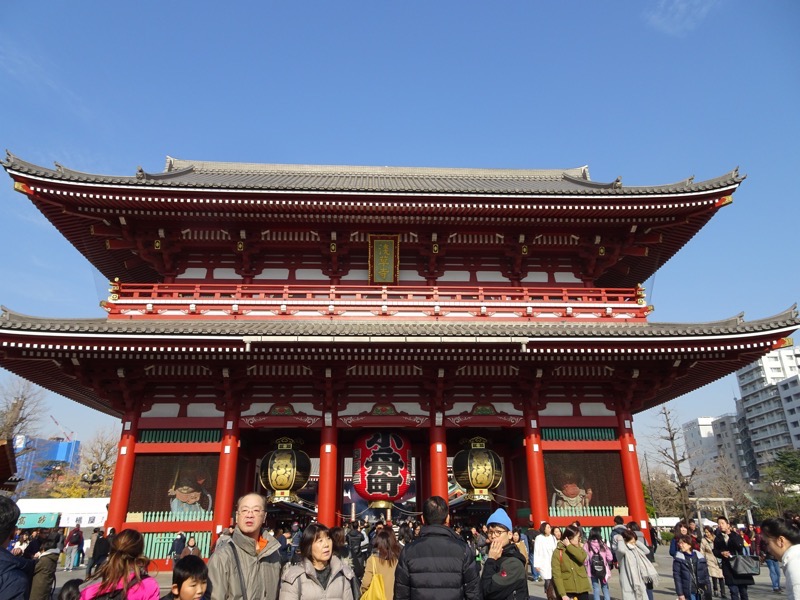

 The temple with it’s five storey pagoda.
The temple with it’s five storey pagoda.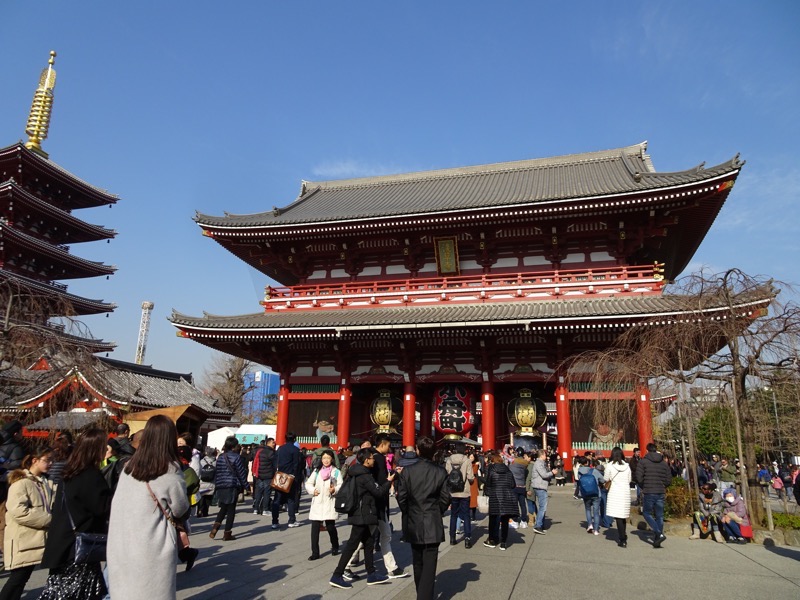 A couple out buying good fortune charms… many focused on health, money, good fortunes, passing exams, fertility – you name it. Need a charm? They have a specific one for you.
A couple out buying good fortune charms… many focused on health, money, good fortunes, passing exams, fertility – you name it. Need a charm? They have a specific one for you. We decided to get our omikuji fortunes. You put your 100Y donation into a slot and pick up a steel cylinder to shake out a numbered stick. Then select your fortune from the drawer of the same number – and voila! Your fortune told is told.
We decided to get our omikuji fortunes. You put your 100Y donation into a slot and pick up a steel cylinder to shake out a numbered stick. Then select your fortune from the drawer of the same number – and voila! Your fortune told is told. 



 At the shrine, we made our offerings and said prayers to Guanyin and Buddha.
At the shrine, we made our offerings and said prayers to Guanyin and Buddha.  Afterwards we wandered the markets for a while and saw lots of ladies walking around in their yukata. Amane says she only wears her yukata for holidays like New Years and festivals, but some Japanese young ladies like to wear them out on special shopping trips – and given it’s a week until Christmas there were plenty of people out shopping.
Afterwards we wandered the markets for a while and saw lots of ladies walking around in their yukata. Amane says she only wears her yukata for holidays like New Years and festivals, but some Japanese young ladies like to wear them out on special shopping trips – and given it’s a week until Christmas there were plenty of people out shopping.

 From Asakusa we jumped another train and head to Ueno. This area is popular shopping district (though I think that phrase could be applied to nearly all of Tokyo’s well known precincts.
From Asakusa we jumped another train and head to Ueno. This area is popular shopping district (though I think that phrase could be applied to nearly all of Tokyo’s well known precincts.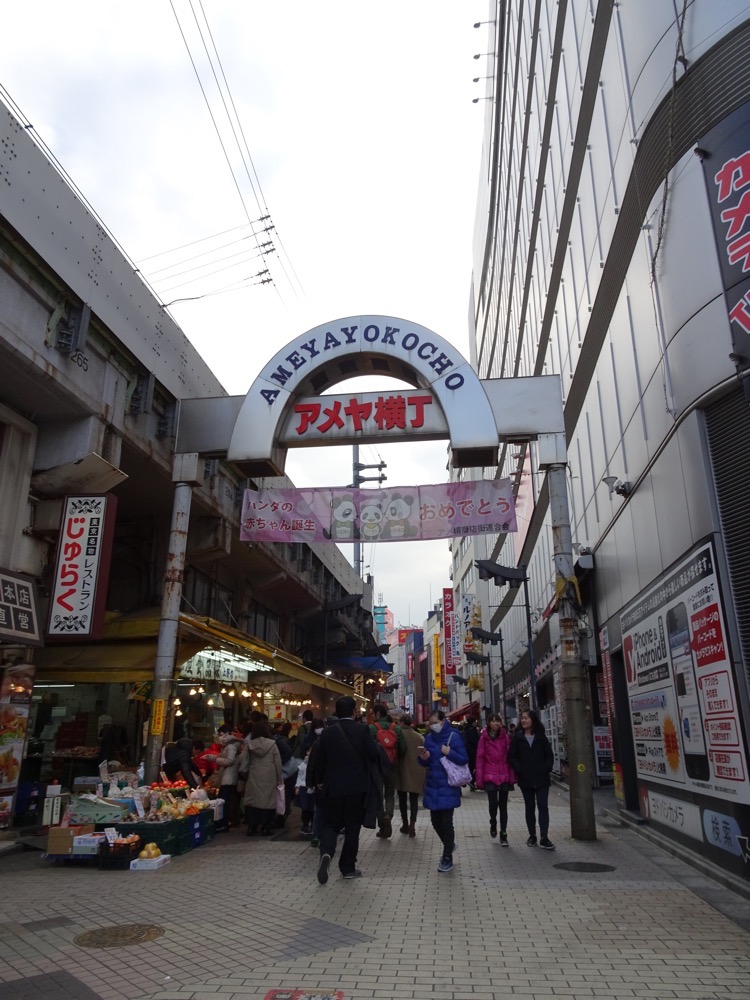

 We went to the zoo first, as it was likely to close earlier than the museum, and our day was made infinitely better by panda, otters, tigers, lions, monkeys, polar bears and cranes etc.
We went to the zoo first, as it was likely to close earlier than the museum, and our day was made infinitely better by panda, otters, tigers, lions, monkeys, polar bears and cranes etc.  The otter enclose had this clever contraption on the outside of the cage that the otters could access by climbing a ladder and swimming through a tunnel. They had been carrying stones back and forth but all swam back into the enclosure as we approached.
The otter enclose had this clever contraption on the outside of the cage that the otters could access by climbing a ladder and swimming through a tunnel. They had been carrying stones back and forth but all swam back into the enclosure as we approached.
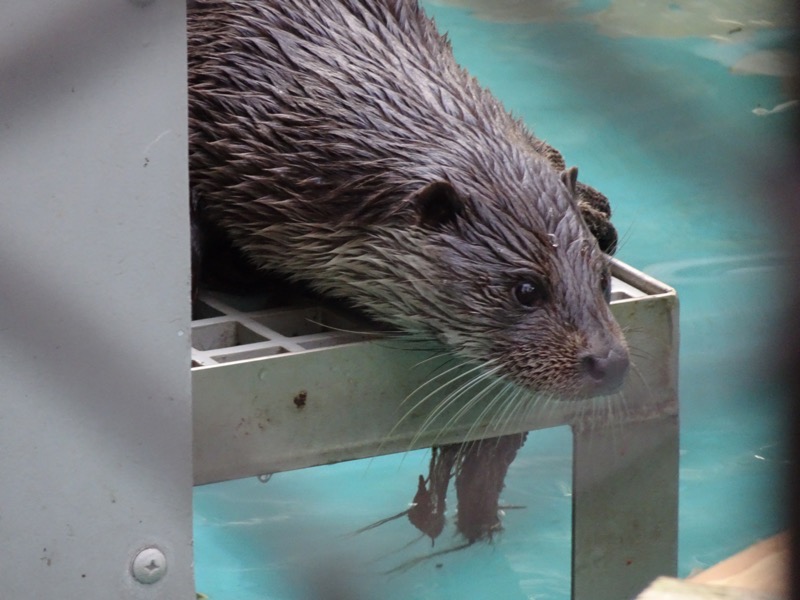
 This guy was staring intently at something just outside their enclosure – but we couldn’t for the life of us figure out what it was. I doubled back around on the otters as we were leaving the park and was interested to see they were feeding them live fish. The otters spent about ten minutes chasing their dinner down which I think is probably better for keeping them active and stimulated than just being fed. They were also given clams to eat, which they had to smash open with their stones. Alas I have no photos of their feeding – they were moving too fast and the lighting conditions too low.
This guy was staring intently at something just outside their enclosure – but we couldn’t for the life of us figure out what it was. I doubled back around on the otters as we were leaving the park and was interested to see they were feeding them live fish. The otters spent about ten minutes chasing their dinner down which I think is probably better for keeping them active and stimulated than just being fed. They were also given clams to eat, which they had to smash open with their stones. Alas I have no photos of their feeding – they were moving too fast and the lighting conditions too low. 












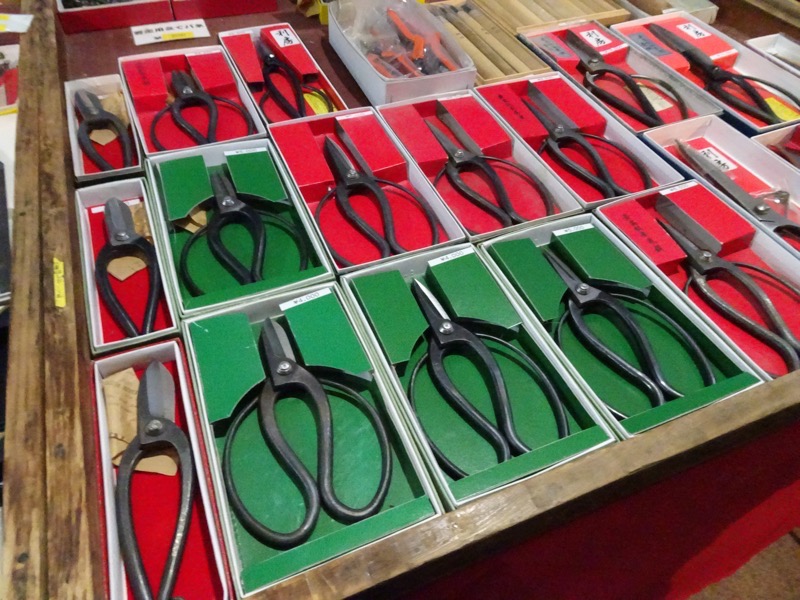

 Gosuku type armour – with two-piece cuirass and white lacing. Edo period, 17thC.
Gosuku type armour – with two-piece cuirass and white lacing. Edo period, 17thC. Okitenuagui Type helmet with dark blue lacking – Azuchi-Momoyama Edo period, 17thC.
Okitenuagui Type helmet with dark blue lacking – Azuchi-Momoyama Edo period, 17thC. Yoroi Type Armour with red lacing. 20thC reproduction of 12thC Heian period original.
Yoroi Type Armour with red lacing. 20thC reproduction of 12thC Heian period original. Gusoku Type armour – with two-piece cruirass and red lacing. Edo period, 17thC
Gusoku Type armour – with two-piece cruirass and red lacing. Edo period, 17thC Gusoku type armour – with two-piece cuirass and bear fur, Edo period 17thC.
Gusoku type armour – with two-piece cuirass and bear fur, Edo period 17thC. Pillows. Baku (mythical beast) and nandina design in maki-e lacquer. Edo period 18thC.
Pillows. Baku (mythical beast) and nandina design in maki-e lacquer. Edo period 18thC.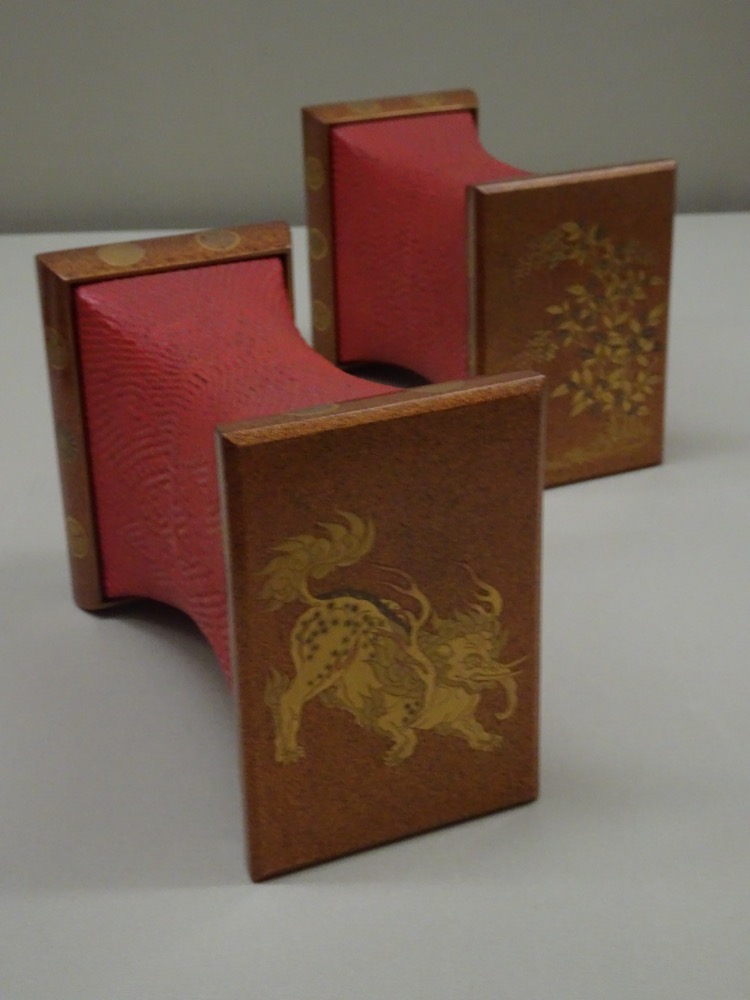 Pair of Boxes for Shell Matching Game Pieces – Designs from scenes of ‘The Tale of Genji’. Edo period, 17thC. Boxes like these held painted seashells for a shell-matching game. They were important in the wedding rituals of feudal lords, as shells with two hinged parts symbolised fidelity.
Pair of Boxes for Shell Matching Game Pieces – Designs from scenes of ‘The Tale of Genji’. Edo period, 17thC. Boxes like these held painted seashells for a shell-matching game. They were important in the wedding rituals of feudal lords, as shells with two hinged parts symbolised fidelity.
 Karaori (Noh costume). Pine bark lozenges, peon and pheonix roundel design on red and light blue checkered ground. Late Edo period, 18thC.
Karaori (Noh costume). Pine bark lozenges, peon and pheonix roundel design on red and light blue checkered ground. Late Edo period, 18thC. Sobatsugi (Noh costume). Dragone and cloud design on dark blue ground. Edo period 18th-19thC.
Sobatsugi (Noh costume). Dragone and cloud design on dark blue ground. Edo period 18th-19thC.
 Nuihaku (Noh costume). Seigaiha waves, mandarin duck, and water lily design on red ground. Edo period, 18thC.
Nuihaku (Noh costume). Seigaiha waves, mandarin duck, and water lily design on red ground. Edo period, 18thC.
 Chukei (Noh fan). Old pine and sun design on gold ground. Edo period 18thC.
Chukei (Noh fan). Old pine and sun design on gold ground. Edo period 18thC. Japanese print. Blindman’s Buff: Allusion to Yuranosuke at the Ichiriki Teahouse. By Chokosai Eisho (date unknown) Edo period, 18thC.
Japanese print. Blindman’s Buff: Allusion to Yuranosuke at the Ichiriki Teahouse. By Chokosai Eisho (date unknown) Edo period, 18thC.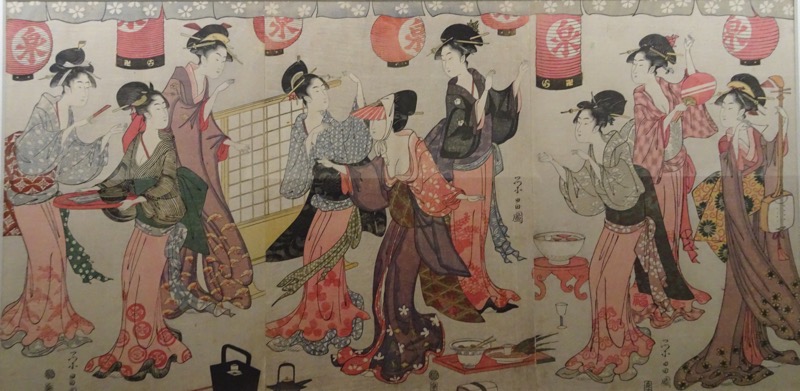 Detail:
Detail: Standing Daikoku Ten (Mahakala) by Kaiken. Wood with polychromy and inlaid crystal eyes. Nanbokucho period, dated 1347.
Standing Daikoku Ten (Mahakala) by Kaiken. Wood with polychromy and inlaid crystal eyes. Nanbokucho period, dated 1347.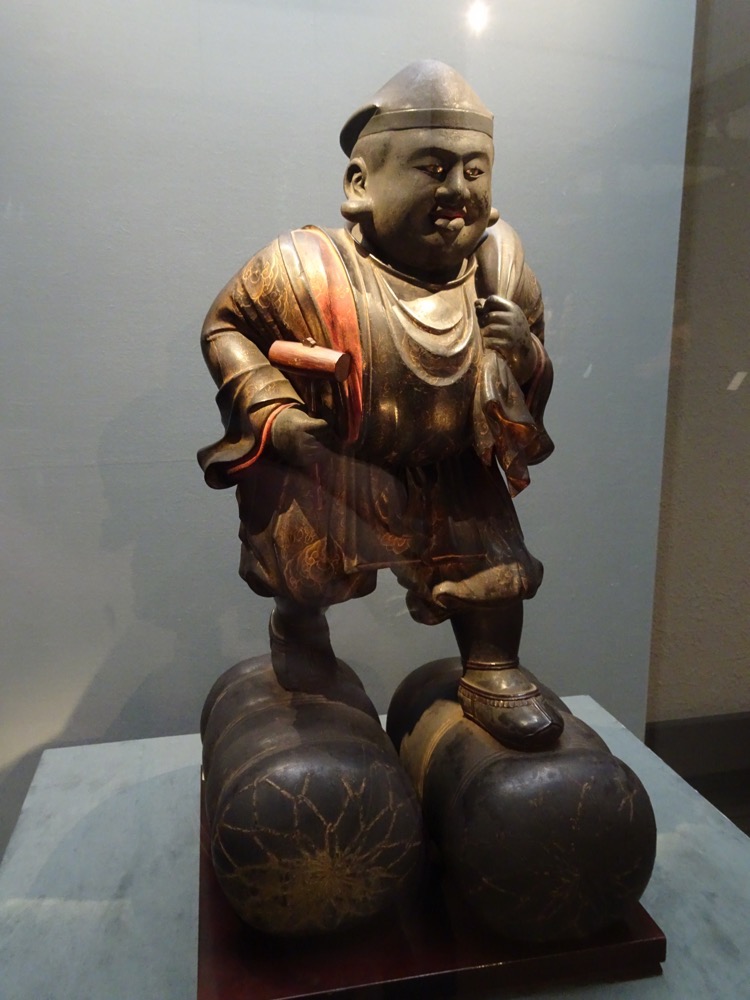 Mokujiki Self-Portrait. Wood, Edo period, 1804.
Mokujiki Self-Portrait. Wood, Edo period, 1804. Shallow bowl, Kingfisher design in overglaze enamel. Imari ware. Edo period, 17th century. Interestingly the museum makes no note whatsoever of the beautiful kintsugi repair work done to this dish.
Shallow bowl, Kingfisher design in overglaze enamel. Imari ware. Edo period, 17th century. Interestingly the museum makes no note whatsoever of the beautiful kintsugi repair work done to this dish.
 Inscriptions of Antique Compendium of Sword Inscriptions over Ages, Edo period dated 1717.
Inscriptions of Antique Compendium of Sword Inscriptions over Ages, Edo period dated 1717.





 Saving here for future reference, via @probzz on Twitter.
Saving here for future reference, via @probzz on Twitter.











































 Next stop was this crazy street corner covered with its bright red paint and ceramic tile mosaics, called the Resting Corner or Resting Place, (which is a bit grave, and way less than cheerful in English!).
Next stop was this crazy street corner covered with its bright red paint and ceramic tile mosaics, called the Resting Corner or Resting Place, (which is a bit grave, and way less than cheerful in English!).

















